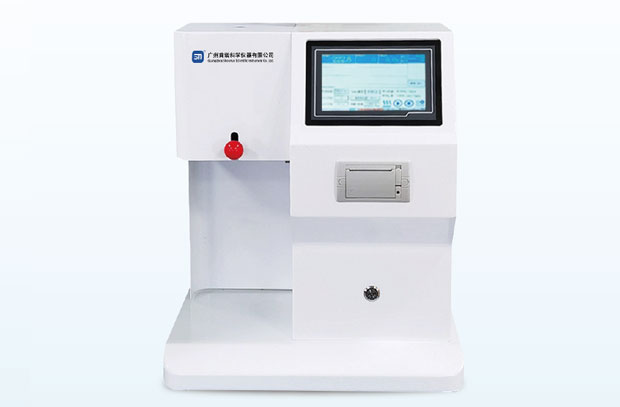The era of "hundreds of billions" of express packaging in China has arrived. The growing business volume also brings serious waste of resources and environmental pollution. From 2017 to 2022, carbon emissions from China's express delivery industry increased from 18.37 million tons to 55.65 million tons, a growth rate of more than 200%, and an average annual compound growth rate of nearly 25%. At present, the logistics and express delivery industry has taken packaging as one of the key areas for carbon reduction, and the connection between various actions and ESG (environment, society and governance) is becoming increasingly significant. Relevant companies have taken action and issued ESG reports under listing regulations or voluntary principles.
1. Recycling and reuse issues in the green transformation of China's express packaging
The complexity of packaging materials has brought certain challenges to recycling and recycling. Express packaging usually involves a variety of materials, such as plastics, paper, metals and composite materials. This diversity not only makes the sorting process complicated, but also increases the cost of recycling.
Paper packaging (cartons and paper bags, etc.) is mainly made of cardboard or corrugated cardboard, has good recyclability and degradability, and has less negative impact on the environment. Plastic packaging (plastic bags, bubble films and plastic foams, etc.) is mostly made of synthetic plastics such as polyethylene (PE), polypropylene (PP) or polystyrene (PS). Although some plastic materials can be recycled, the recycling rate is still at a low level due to the difficulty of sorting.
Composite packaging such as postal envelopes and express bags are usually made of plastic and paper. This composite structure makes classification and separation more difficult.
Biodegradable plastic packaging is an environmentally friendly alternative material, such as degradable packaging materials based on polylactic acid (PLA), but the cost is high and requires a certain degree of scene adaptation.
Glass and metal packaging are mainly used to transport specific categories such as high-end goods. They are easier to recycle and reuse, but they are heavy and fragile, and the reverse logistics cost is relatively high.
The recycling system for express packaging waste is still immature and faces the dual challenges of extensive classification and unclear rights and responsibilities.
At present, China's garbage classification system fails to finely classify low-value-added express packaging waste, which is usually treated together with dry garbage, which not only causes resource waste, but also aggravates soil pollution caused by landfill and harmful gases produced by incineration, damaging the environment and human health. In addition, the participants in the recycling system are not clearly defined, and the rights and responsibilities are not clearly allocated. The green recycling chain of the entire express packaging involves packaging companies, delivery companies, e-commerce platforms, consumers and recycling companies, but the responsibilities and interests of each party are unclear, resulting in low enthusiasm and participation. Although some express companies have taken some green measures, such as setting up recycling points in colleges and universities, using degradable materials, and conducting pilot projects for recycling boxes, they have not yet formed a scale effect, the effect is limited, and the market-oriented recycling mechanism is not mature.
Consumers' environmental awareness has begun to awaken, but their ability to act still needs to be further strengthened. Accenture's "2022 China Consumer Insights" pointed out that 43% of respondents are willing to pay a certain percentage of premium for environmentally friendly products or packaging. Although some consumers have expressed a preference for sustainable packaging, when it comes to actual purchasing decisions, many people still fail to choose environmentally friendly packaging because of price sensitivity or lack of specific incentives. In addition, consumers' overall understanding of green packaging is not sufficient, and their understanding of the characteristics and recycling methods of various environmentally friendly materials is limited, which limits the popularity and acceptance of green express packaging. In other words, if we want to comprehensively promote the promotion of green express packaging, it is not enough to simply raise consumers' awareness of environmental issues. We also need to further support the transformation of action by formulating more attractive price policies, providing clear environmental protection labels, and enhancing the visibility of recycling throughout the entire process.
Policies and standards still need to be improved and refined, and the effectiveness of the implementation level needs to be improved. Although policies and standards related to express packaging have been introduced in the past decade, they are mostly focused on encouragement rather than enforcement, which to a certain extent limits the implementation strength. As shown in the following table, the policy development of green express packaging has gone through three stages from germination to deepening and turning to the "green revolution".
Table 1 Schematic diagram of the sorting out of policies related to the green transformation of packaging Table 1 Schematic diagram of the sorting out of policies related to the green transformation of packaging
2. Actions taken by express delivery companies from the environmental perspective of ESG
According to the regulations of the Hong Kong Stock Exchange, all listed companies must comply with the requirements of the ESG reporting guidelines and publish ESG reports regularly. Mainland express delivery companies listed on the Hong Kong stock market and have published ESG reports in 2022-2023 mainly include SF Express, JD Logistics, ZTO Express and YTO Express. The ESG reports of these leading logistics companies show the following commonalities and characteristics from an environmental perspective.
First, commitments and descriptions have been made on reducing carbon emission intensity and reducing waste. For example, SF Express described that it would achieve the goal of reducing greenhouse gas (GHG) emission intensity, office power intensity, office water intensity and office waste intensity in 2022; promote green office practices and sort waste. In terms of the environment, YTO International Express and Supply Chain Technology Co., Ltd. has a climate change policy that complies with the Task Force on Climate-related Financial Disclosures (TCFD), which mitigates the impact of climate change by identifying and assessing potential risks; in 2022, the company's total greenhouse gas emissions will be reduced from 301.1 tCO2e in 2021 to 214.8 tCO2e; by actively managing waste emissions, the emissions of pollutants such as nitrogen oxides and sulfur dioxide have been significantly reduced; focusing on the efficient use of resources, selecting equipment with high energy and water efficiency, and reducing energy consumption from 543.7 MWh in 2021 to 355.9 MWh in 2022. ZTO Express has released a green procurement policy, which aims to standardize procurement behavior, guide suppliers to provide more environmentally friendly and sustainable products and services, and promote the green and low-carbon development of the overall supply chain by reducing resource consumption and environmental pollution.
Second, the greening of green packaging was explained. For example, JD Logistics introduced the industry's first DWOP (Delivered with Original Package) to significantly reduce the use of disposable packaging; about 90,000 cartons are recycled in more than 100 cities each month. SF Express emphasizes reducing the use of disposable document envelopes and promoting green packaging solutions. ZTO Express has carried out green express delivery activities in five universities in Shenyang, Shanghai, Hunan and other places, promoting the use of degradable packaging and encouraging students and faculty to reuse express packaging. YTO International Express and Supply Chain Technology Co., Ltd. has increased the use of recycled paper.
Third, the use of new energy and green logistics is emphasized. For example, SF Express uses green delivery of electric vehicles and public transportation, covering more than 90% of transportation scenarios. JD Logistics has implemented important environmental protection measures such as using new energy vehicles and developing hydrogen energy transportation test routes; established China's first "carbon neutral" logistics park and used photovoltaic power generation.
In addition to the information disclosed by the above ESG, express delivery companies have taken positive measures to reduce environmental impact in terms of green packaging. Adopt a reduction strategy in packaging design, reduce the use of materials through optimized design, and improve the recyclability of packaging. Actively promote the use of packaging boxes and bags made of recyclable and biodegradable materials to reduce the use of petroleum-based raw materials and reduce the negative impact on the environment. Developed reusable packaging boxes for multiple cycles, thereby significantly reducing the need for disposable packaging. By using advanced packaging algorithms and equipment, optimize the size and shape of the package to ensure that the package is more matched with the product size, thereby reducing unnecessary material use. Implemented the "tape-free packaging" project, avoiding the use of tape by designing packaging boxes that can be sealed by themselves. Established a recycling system for packaging materials, encouraging consumers to return used packaging materials through logistics delivery personnel for reuse or recycling. Cooperate with local governments and environmental protection organizations to promote community-level packaging recycling programs. Through platforms and marketing activities, consumers are educated on the importance of packaging reduction and recycling, and consumers are encouraged to choose environmentally friendly packaging options and participate in packaging recycling programs.
3. How to take the road of sustainable development of China's express delivery industry
The express delivery industry should closely focus on ESG standards, take "reduction, reuse, and recycling" as the basic principles, follow policy guidance, and promote the construction of a green express packaging system in parallel with "green actions" and "information disclosure".
First, fully understand the ESG disclosure rules and use them as the basis for enterprises to carry out green actions. According to the Hong Kong Stock Exchange (HKEX)'s environmental, social and governance (ESG) disclosure guidelines, the disclosure scope that is more directly related to the greening of packaging mainly includes the following aspects.
The first is the emission level. This refers to data and actions related to waste gas and greenhouse gas emissions, discharges to water and land, and the generation of hazardous and non-hazardous wastes. Specifically, companies need to disclose the generation and treatment of their waste, including the total output of solid and hazardous wastes and the proportion of recycling. This is directly related to the recycling and waste treatment of packaging materials.
The second is the level of resource use, environment and natural resources. The resource use level refers to the goals and actions for the effective use of resources (including energy, water and other raw materials). One of the key performance indicators is "the total amount of packaging materials used in finished products (in tons) and (if applicable) per unit of production". The natural resource level refers to actions that have a significant impact on reducing the environment and natural resources. Specifically, companies disclose the use of resources, especially the amount of packaging materials used, including but not limited to paper, plastic, etc.; explain how to optimize packaging design, reduce material use and improve the recyclability of materials. The third is the product responsibility level. This refers to actions related to the health and safety of providing products and services. Specifically, companies disclose the overall environmental characteristics and compliance of products. For example, the use of renewable or biodegradable packaging materials and their compliance, explain the accuracy and transparency of information, and provide countermeasures taken to reduce environmental and safety hazards in the product life cycle.
Second, take "reduction" as the principle, avoid excessive packaging at the source, and strengthen green design. First, avoid unnecessary secondary packaging on the basis of meeting logistics needs to reduce the environmental burden. Secondly, carry out packaging slimming, and reduce the amount of materials as much as possible while ensuring that express packaging meets the necessary performance standards. Specifically, packaging manufacturers pay attention to the rationality of details and structure when designing, such as using easy-to-tear adhesive to reduce loss and increase the recycling rate of packaging. Courier companies should "tailor" according to the nature and size of the items, implement reasonable packaging, reduce the number of packaging layers and void ratio, and reduce unnecessary fillers such as foam plastics. In addition, promote the use of automated equipment to reduce the risk of damage to packaging during sorting and transportation, and improve the safety and standardization of packaging.
Third, reuse and reuse are given equal importance to expand application scenarios and technological innovation. First, advocate the recycling of express packaging, such as piloting and promoting recycling boxes (bags). Compared with traditional cartons, the recycling box can be recycled more than 50 times, which greatly reduces the cost of single use and extends the service life of the packaging, with good carbon reduction and economic benefits. Secondly, for plastic packaging that cannot be reused, physical or chemical methods are used for recycling. Physical recycling is usually given priority due to its lower cost and lower carbon emissions. New products are made through recycling, cleaning, slicing, melting, granulation and other processes. It is mainly suitable for plastics that are not seriously polluted or composed of a single polymer. Chemical recycling is mainly for plastics that are contaminated or have complex components. Through processes such as pyrolysis, gasification and depolymerization, polymers are decomposed into basic chemical components and then used as raw materials for the production of new plastics, thereby effectively reducing dependence on virgin materials and reducing carbon emissions. It is worth noting that large-scale chemical recycling still requires continuous technological breakthroughs and a large amount of capital investment.
Fourth, avoid solving problems in a single link or a single subject, and emphasize the participation of the whole process and all subjects. The responsibility for recycling express packaging should be shared by manufacturers, e-commerce platforms, merchants, delivery companies and consumers. Manufacturers need to reduce environmental impact in the production process, and delivery companies and packaging manufacturers should establish a closed-loop management model for recycling and reuse. E-commerce platforms and merchants should promote the standardization of packaging and reduce personalized packaging. Consumers can actively participate in the recycling of express packaging through carbon credit mechanisms. The promotion of this series of actions includes not only the formulation of clear laws and regulations to define the responsibilities of all parties, but also the use of economic incentives such as tax incentives and subsidy policies. For example, tax exemptions can be provided for green enterprises, and economic incentives can be provided for consumers who actively participate in packaging recycling and circulation. At the same time, a comprehensive evaluation system for quantifying green packaging behavior should be established, and a reward and punishment system should be implemented based on the contributions of all parties.
Finally, the research and development of intelligent technologies and information platforms should be encouraged to help enterprises improve efficiency and reduce costs in the process of green transformation. The application of core technologies such as intelligent robots and drones is subverting traditional logistics methods. For example, intelligent robots with handling, stacking and sorting functions have become a key tool for improving operational efficiency.
The upgrading of green packaging technology, combined with the introduction of digital and intelligent dispatching systems, will further enhance the transportation efficiency of the express delivery industry. Establish a top-level digital operation platform as the center of information management. Through the recording, transmission and management of big data, the entire green process can be deeply analyzed and summarized, quantified into logistics indicators, economic indicators and carbon reduction indicators, etc., providing an important basis for policy formulation, enterprise management and consumer supervision, and further improving the efficiency and effectiveness of green express packaging.









 Tel:13556033107
Tel:13556033107 E-mail:gzsnyq@vip.163.com
E-mail:gzsnyq@vip.163.com 




